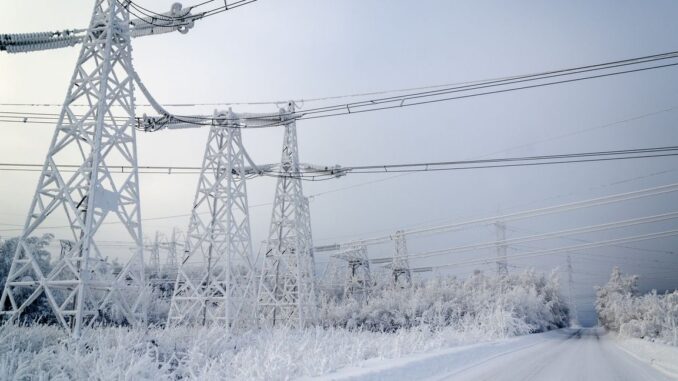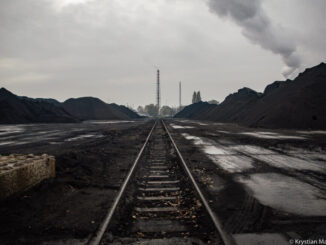
Large swaths of North America face elevated reliability risks this winter, generally driven by factors such as higher peak demand and power plant retirements, according to Fritz Hirst, NERC director of legislative and regulatory affairs.
NERC, North America’s grid reliability watchdog, is set to release its annual winter reliability assessment on Thursday, Hirst said Sunday at the National Association of Regulatory Utility Commissioners’ annual meeting in New Orleans.
The report reviews how prepared – or not – regions are to withstand extreme winter weather, which can drive up electric use, reduce fuel supplies for generators and knock power plants offline.
“It’s a sobering assessment … a large portion of North America is at risk of insufficient supplies during the extreme winter scenarios,” Hirst said.
Although the National Oceanic and Atmospheric Administration is forecasting a milder-than-normal winter for most of North America, an extended cold snap can cause reliability problems, Hirst said.
In a change from last year’s assessment, the Southeast, Alberta and Canada’s Maritime provinces face an elevated reliability risk during extreme weather this winter, according to Hirst.
The Southeast has lost 500 MW of generating capacity while demand has increased compared to a year ago, Hirst said. Power plants in the region have lower-than-normal coal stockpiles, he said.
In Alberta and the Maritime provinces, added generation hasn’t kept pace with growing electricity demand, according to Hirst.
In the U.S., the Electricity Reliability Council of Texas, the Midcontinent Independent System Operator and ISO New England again face elevated winter reliability risks during extreme weather, Hirst said. In New England, which is limited in its ability to import natural gas, storage tanks at oil-fired power plants are only about 40% full, down from 54% last winter, he said.
In a positive development, the Pacific Northwest is no longer at elevated risk because of an improved outlook for hydroelectric generation in the region, Hirst said. Also, natural gas generation and wind additions improved the outlook for the Southwest Power Pool, which is no longer at a heightened risk for energy emergencies, he said.
Hirst warned that a shortage of distribution transformers could slow restoration efforts during winter storms.
NERC recommends that power plant owners line up their fuel supplies for this winter. “Early action is essential,” Hirst said. “We’re calling on generators to take every necessary step to make sure their fuel supplies are adequate.”
The grid watchdog is in the early stages of developing reliability standards that would require generators to assess their fuel needs over a five-year planning period and a one-year operational period, Hirst said.
NERC on Sept. 12 issued an alert requiring utilities and others to report on their preparations for this winter, Hirst said. Those reports should include information on fuel supplies.
Based on the confidential reports, generators are taking “good and important” steps, but there are some exceptions, according to Hirst.
NERC also recommended that states keep power plants operating if they are essential for reliability, Hirst said.
Although NERC is “sanguine” about the energy transition, it’s concerned about the pace of coal-fired power plant retirements, according to Hirst.
“The system needs dispatchable and flexible resources,” such as coal and gas, he said. “Natural gas is probably your best bet.”
Gas plants offer ramping capabilities and a better environmental profile than coal, according to Hirst. Also, it is flexible and can balance variable resources, he said. Gas-fired power plants will likely be needed until energy storage is developed at scale, he said.



